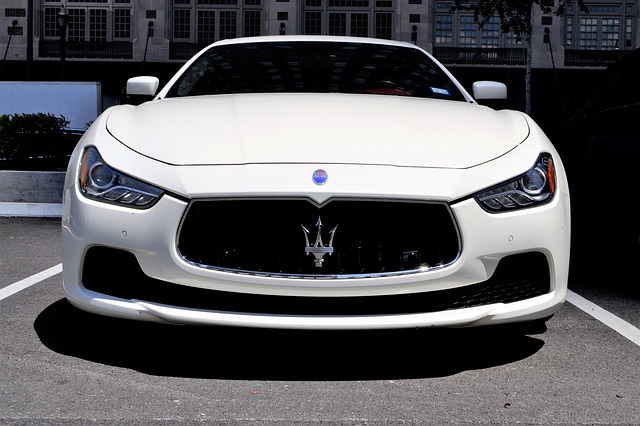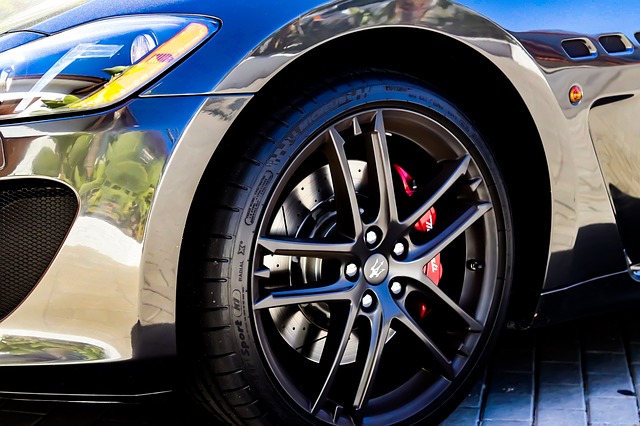Maserati as a luxury automaker is intriguing as a whole. Over the years, Maserati has changed a lot as an automaker. One stark example is the Maserati Ghibli. Named after a Mediterranean wind, the Ghibli has seen many iterations over the years.
Maserati Ghibli (AM115)
Initially launched back in 1966, Maserati had a much different interpretation of the Ghibli. The original Ghibli is a sleek coupe built-in 2+2 configuration. Propelled by a delightful 4.7-liter quad-cam dry-sump V8 married to a 5-speed ZF manual. Maserati offered a 3-speed automatic as well. Producing 306 horses and 340 lb-ft of torque, it bellows a brawny tone befitting of a grand tourer bearing the Maserati nameplate. And if you thought the Ghibli looks cool, Maserati soon made a Spyder variant with a hard and soft top option.
It could break 60 mph in sub-7-seconds, an exclusive claim at the time. It doesn’t have the pedigree of the Ferrari Daytona. Nor can it quite compare to the Lamborghini Miura in pantomime. However, it has the panache of a bona fide Maserati. It will look as magnificent as the Daytona cruising about the Italian Riviera. And I reckon even today the original Ghibli would garner as much attention as a Miura.
Then again, Maserati couldn’t have messed up the Ghibli. Designed by a young Giorgetto Giugiaro who was working at Ghia, it had to be stunning. They didn’t care about the design rules implemented by the US. Giugiaro penned the design himself to outshine the competition including Bertone and Pininfarina. And in just 3 months, he drew up a fastback coupe appropriate for Maserati’s notion of a grand tourer. This landed Ghia the contract for a total of 1,150 coupes and 125 Spyders.
It’s not until a few years forward and an ownership change before Maserati conceptualized the ultimate Ghibli. In 1969, Maserati introduced the high-performance Maserati Ghibli SS. It followed the Maserati tradition for developing SS variants. Maserati stroked up the engine to 4.9-litre, resulting in an increase of 24 horsepower and 15 lb-ft of torque. A lengthy stroke limits the redline to just 5,500, but the torque comes in quick. This differentiates the Maserati Ghibli from the Ferrari and Lamborghini.
With that said, even by the standards of 1960, the Ghibli was archaic in suspension design. Hiding beneath the gorgeous body is a live axle suspension on leaf springs. By 1964, Lamborghini had already implemented fully independent coilovers in their cars. This translates to a particularly lively rear end should you push the Ghibli in the corners.
Maserati Ghibli (AM336)
Fast forward a few decades and yet more ownership changes, Maserati resurrected the Ghibli nameplate. Again, it had to be a 2+2 coupe. However, Maserati emphasized on both luxury and performance. Debuted in 1992 at the Turin Motor Show, Maserati revealed the Ghibli. It derived its body shell and interior from the Biturbo with a much-reworked drivetrain.
Available for the second-gen Ghibli was a 2.0-liter V6 and 6-speed manual for the Italian market. It produces 302 horsepower and 275 lb-ft of torque. For export, Maserati offered a 2.8-liter V6 with a 5-speed manual and optional 4-speed automatic. The export market promptly received the 6-speed in 1996. The 2.8 puts out 280 horsepower and 305 lb-ft of torque. While it touts a larger displacement, the 2.8 has less power due to stringent emissions law. That said, both engines will just about manage sub-6 seconds 0-62 mph sprint.
However, the Ghibli never amassed quite the attention the original did. While Marcello Gandini designed it, it didn’t look too dissimilar to the Maserati Biturbo. The special edition Ghibli that followed is more interesting though. To appeal more towards its racing roots, Maserati brought out the special edition Ghibli Cup. Think of it as the second-gen Ghibli SS. More impressive is how it produces 325 horsepower from a 2.0-liter V6. It was the record holder for the most specific power output, surpassing the Bugatti EB110 and Jaguar XJ220.
This Ghibli is a lot more forward-thinking in terms of technology. It follows the Italian tradition of a longitudinally mounted rear-wheel-drive layout. However, the chassis is optimized for the track. Touting a unibody construction with front MacPherson and rear semi-trailing arms. A Torsen limited-slip differential keeps the rear in check. This combination culminates in a balanced handling car with ample torque to maintain the pace.
It’s not as flamboyant and stylish as its predecessor. That said, it is much more capable around a track. In fact, Maserati capitalized on its track aptitude, hosting a single make Ghibli Open Cup to attract prospective racing teams.
Maserati Ghibli (M157)
This is the Maserati Ghibli that most people are familiar with. Initially debuting at the 2013 Shanghai Motor Show, the latest Ghibli is a four-door mid-size executive sedan. Despite the Ghibli moniker, it’s less of a Ghibli and more of a Biturbo successor. It’s also Maserati’s first mass-appeal production vehicle. Designed to compete in the German-dominated luxury sedan market.

Underneath the hood is a Maserati-designed Ferrari-assembled 3.0-liter twin-turbocharged V6. It puts out between 325 horsepower and 424 horsepower. The torque figure ranges from 369 lb-ft to 428 lb-ft, respectively. A first in Maserati history is the optional 3.0-liter twin-turbo diesel V6 borrowed from Fiat. While it only offers 271 horsepower, it gives back in 443 lb-ft of torque throughout its rev range. In 2020, Maserati unveiled the Ghibli Hybrid with a 2.0-liter turbocharged mild-hybrid inline-4. It makes 325 horsepower and 450 Nm of torque. All third-gen Ghiblis are supplied with the commonplace ZF 8-speed transmission.
While some might argue that the new Ghibli isn’t deserving of its badge, it’s Maserati’s best seller yet. Maserati understands that they can’t get by with just the niche Quattroporte and GranTurismo. It needs a mass-market model. The Ghibli fits the bill, a sporty Italian luxury sedan adorned with Maserati’s distinctive design philosophy.
It’s efficacious too, as the third-gen Ghibli was Maserati’s best-seller. Especially noteworthy is how popular it is in the US, with double the sales compared to the whole of Europe. Combining Maserati’s exclusivity and modern approachability, the Ghibli is necessary for Maserati. Only the Levante would outsell the Ghibli for Maserati.
Still, the Ghibli S is an invigorating Italian luxury sedan. The higher output 3.0-litre twin-turbo V6 provides enough zest for it to get you into trouble. It also shares the underpinning of the well-established Quattroporte. Bar a shorter wheelbase which contributes to a more agile feel.
Verdict
The original Ghibli compared to the latest Ghibli is a major departure. The latest Ghibli might be a controversial one, but it signifies Maserati’s willingness to follow the tide. Without the Ghibli, Maserati might not even stay afloat.

